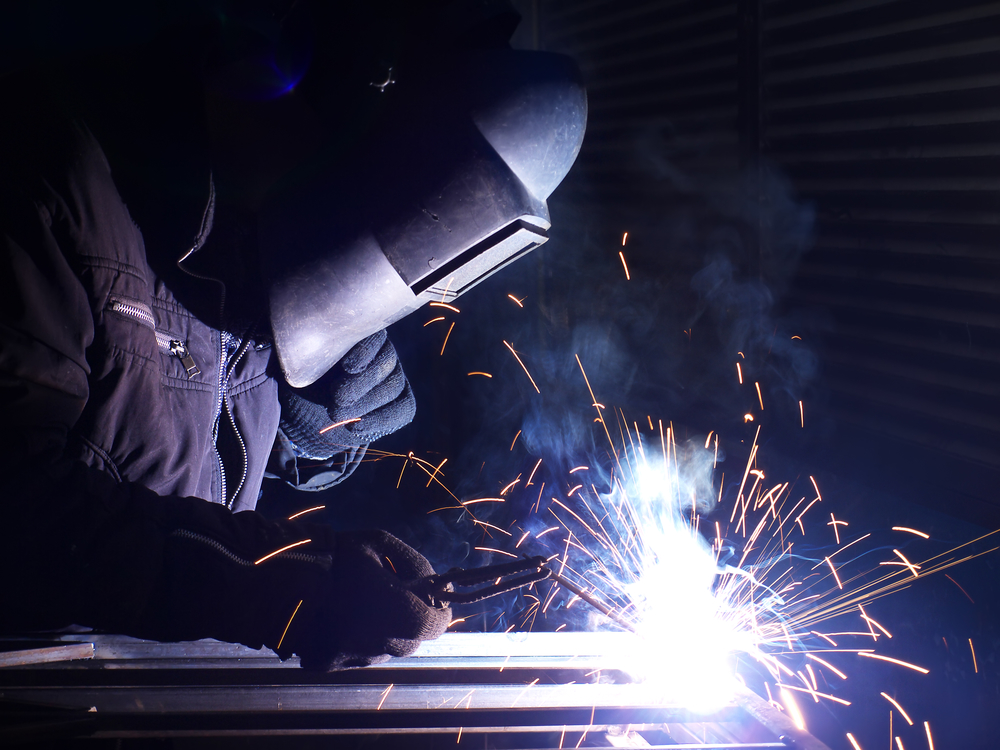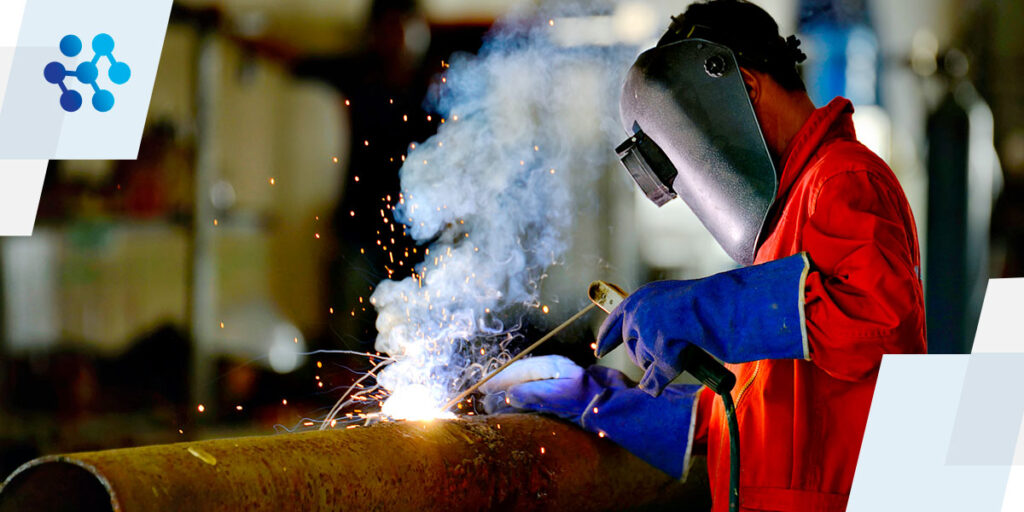Typical Welding Repair Service Issues and How to Address Them Effectively
Welding fixings typically run into a range of issues that can endanger the stability of the end product. Common issues consist of inadequate infiltration, porosity, and imbalance, among others. Each issue provides distinct obstacles that need certain strategies for resolution. Recognizing these concerns is necessary for welders aiming to enhance their skills and outcomes. This discussion will certainly explore these typical welding repair work problems and reliable techniques to address them.
Insufficient Penetration
Insufficient infiltration happens when the weld metal fails to fully fuse with the base product, leading to weak joints and potential architectural failings. This problem typically comes from insufficient warmth input, incorrect electrode angle, or incorrect welding speed. Welders might run into poor infiltration because of a miscalculation of the required criteria for a specific material thickness or type. In addition, contamination on the base material's surface can hinder efficient bonding, intensifying the trouble. To attend to insufficient infiltration, welders ought to guarantee suitable settings on their equipment and preserve a tidy job surface area. Routine evaluation of welds is suggested to determine any shortages early, permitting timely corrections and the avoidance of endangered architectural stability in bonded assemblies.
Porosity
Porosity is an usual problem in welded joints that materializes as little gas bubbles trapped within the weld metal. This defect can jeopardize the stability of the weld, bring about minimized toughness and possible failing under tension. Montana Mobile Welding and Repair. Porosity commonly arises from contamination, dampness, or incorrect welding methods, which allow gases to escape right into the molten weld swimming pool. To attend to porosity, welders must guarantee appropriate surface preparation, preserve a clean working atmosphere, and make use of ideal welding criteria. Additionally, choosing the appropriate filler product and protecting gas can reduce gas entrapment. Routine examination and screening of welds can assist determine porosity early, assuring prompt restorative activities are taken, thus preserving the quality and dependability of the welded structure
Imbalance
Imbalance in welding can develop from numerous variables, including improper arrangement and thermal growth. Understanding the origin is crucial for reliable resolution. Several improvement techniques are readily available to realign components and guarantee architectural integrity.
Causes of Misalignment
Welding misalignment typically originates from a variety of underlying concerns that can jeopardize architectural stability. One key cause is incorrect fit-up of components prior to welding, which can result in spaces and irregular surfaces. Variants in thermal expansion throughout the welding process can additionally cause distortion, especially if the products being joined have various coefficients of growth. Furthermore, inadequate clamping and fixturing might fall short to hold components securely in place, leading to motion during welding. Inadequately maintained devices, consisting of welding devices and devices, might introduce incongruities in the weld bead, further adding to misalignment. Lastly, driver error, originating from inadequate training or experience, can additionally play a significant function in creating misaligned welds.
Improvement Techniques Available
Dealing with misalignment properly requires a mix of restorative strategies customized to the specific issues available. One usual method is the use of components or jigs to hold elements in the correct placement during welding, ensuring consistent positioning. Furthermore, preheating the products can help in reducing distortion and enhance fit-up. For substantial imbalance, mechanical realignment strategies, such as using hydraulic jacks or clamps, can be used to remedy the placement before welding. Post-weld warmth treatment might additionally be necessary to alleviate tensions brought on by imbalance. Finally, mindful inspection and adjustment during the configuration phase can avoid imbalance problems from becoming considerable problems, promoting a smoother welding procedure and enhancing general architectural integrity.
Distortion
Distortion is a typical difficulty in welding that can occur from different elements, including uneven heating and air conditioning. Comprehending the reasons for distortion is necessary for applying reliable prevention techniques. Addressing this issue not only boosts architectural integrity yet likewise enhances the overall top quality of the weld.
Root causes of Distortion
When based on the intense heat of welding, products frequently undertake changes that can result in distortion. This sensation largely arises from thermal expansion and tightening during the welding process. As the weld location heats up, the material expands; upon cooling, it acquires, which can develop structural welding interior stress and anxieties. Additionally, unequal heating throughout a workpiece can aggravate these tensions, resulting in bending or bending. The kind of material also plays a significant duty; steels with varying thermal conductivity and coefficients of development might react in a different way, bring about unforeseeable distortions. Additionally, bad joint style and inadequate fixturing can add to misalignment throughout welding, increasing the likelihood of distortion. Recognizing these causes is important for reliable welding repair service and prevention techniques.
Avoidance Techniques
Efficient avoidance strategies for distortion during welding concentrate on managing warmth input and making certain appropriate joint layout. Keeping a constant warm input helps to decrease thermal expansion and tightening, which can lead to distortion. Using strategies such as pre-heating the work surface can also reduce the temperature level gradient, promoting consistent heating. Furthermore, selecting suitable joint layouts, such as T-joints or lap joints, can improve security and reduce tension focus. Carrying out appropriate fixturing to protect the work surfaces in place additionally aids in preserving alignment during the welding procedure. Staggered welding sequences can disperse heat much more evenly, preventing local distortion. By applying these techniques, welders can significantly reduce the chance of distortion and boost the overall top quality of their welds.
Fracturing
Splitting is a typical issue experienced in welding fixings, commonly resulting from numerous elements such as inappropriate cooling rates, product option, or inadequate joint prep work. The incident of fractures can considerably endanger the honesty of the weld, bring about potential failures throughout operation. To resolve this problem, welders must initially assess the source, making sure that materials are compatible and appropriately chosen for the details application. Additionally, regulating the air conditioning rate throughout the welding procedure is necessary; quick air conditioning can induce anxiety and result in breaking. Correct joint layout and preparation additionally add to reducing the danger. Executing these methods can enhance weld high quality and sturdiness, eventually lowering the probability of cracking in ended up weldments.

Incomplete Fusion
A considerable problem in welding repair services is insufficient blend, which occurs when the weld steel does not sufficiently bond with the base material or previous weld passes - Belgrade. This problem can result in weaknesses in the joint, possibly compromising the stability of the bonded framework. Factors adding to incomplete blend include insufficient warm input, inappropriate welding strategy, and contamination of the surfaces being signed up with. To resolve this problem successfully, welders must ensure correct pre-weld cleaning and surface preparation, as well as readjust their welding criteria to attain sufficient infiltration and combination. Routine assessment during the welding process can additionally aid identify insufficient combination early, enabling for timely see this website rehabilitative measures to improve the overall top quality of the weld
Overheating
While welding repair services can enhance structural integrity, overheating provides a substantial challenge that can lead to material degradation. Extreme warmth throughout welding can modify the mechanical residential properties of metals, leading to lowered strength, increased brittleness, and warping. This phenomenon is particularly critical in high-stress applications where architectural integrity is extremely important. Recognizing overheating can include visual inspections for staining or distortion, as well as checking temperature throughout the welding process. To reduce the threats connected with overheating, welders must use proper methods, such as controlling heat input, readjusting traveling rate, and utilizing ideal filler products. Furthermore, applying pre- and post-weld warm treatments can help restore material buildings and boost the total high quality of the repair work, making certain long-term efficiency and security.
Frequently Asked Questions
What Are the Typical Signs of a Welding Issue?

How Can I Test My Welds for High quality?
To examine welds for top quality, one can utilize visual assessments, ultrasonic screening, and radiographic approaches. Each technique guarantees architectural integrity, identifies problems, and verifies adherence to defined criteria, inevitably enhancing the reliability of the welded joints.
What Security Precautions Should I Take While Welding?
When welding, one should prioritize safety by wearing ideal individual protective devices, making certain proper air flow, safeguarding combustible products away, keeping a clean office, and knowing surroundings to avoid accidents and injuries.
Can I Repair a Weld Without Redesigning the Entire Joint?
Fixing a weld without remodeling the whole joint is feasible, depending on the damage (Belgrade). Techniques such as grinding, including filler material, or utilizing a welding procedure can successfully deal with particular problems while protecting the bordering framework
What Tools Are Important for Effective Welding Fixes?
Essential devices for efficient welding repair work include a welding maker, cord brush, mill, protective equipment, clamps, and filler products. Each tool plays a vital function in guaranteeing top quality and security during the repair process. Porosity typically emerges from contamination, dampness, or improper welding methods, which permit gases to run away right into the liquified weld pool. Inadequately maintained tools, consisting of welding devices and devices, might present variances in the weld bead, more contributing to misalignment. When subjected to the intense warmth of welding, products commonly undergo changes that can lead to distortion. Splitting is a typical concern run into in welding repair work, often resulting from different factors such as incorrect air conditioning rates, product choice, or poor joint prep work. A substantial problem in welding repairs is insufficient blend, which takes place when the weld metal does not adequately bond with the base material or previous weld passes.